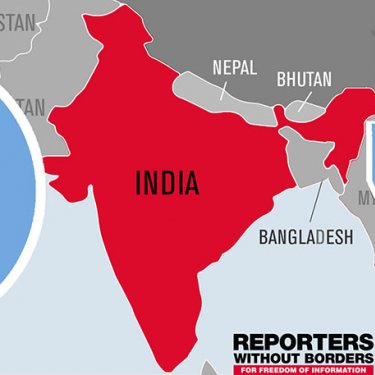After more than 60 Internet cuts so far this year, India urged to overhaul legislation

After yet another Internet cut in Indian-administered Kashmir, Reporters Without Borders (RSF) condemns the rapid growth in India’s use of this crude form of censorship and calls on the federal authorities to overhaul legislation so as to guarantee the universal right to online news and information.
The Indian authorities are currently disconnecting the Internet at a rate of ten times a month, each time depriving an average of several hundred thousand people of all online information. This was the case on 5 July, in the Kashmiri district of Shopian, in India’s far north, where the Internet was disconnected as a “preventive measure” after a gunfight between separatist militants and paramilitaries.
According to the Software Freedom Law Centre, this was the 61st time that the Internet was cut somewhere in India since the start of 2019 and the 45th time in the state of Jammu and Kashmir. This was a two-fold record: India disconnects the Internet more than any other country by far, and the frequency of the cuts continued to soar in the first half of 2019.
“Disconnecting the Internet prevents journalists from working because it prevents them from accessing their most basic sources, and it deprives the public of reliable and independently-reported information,” said Daniel Bastard, the head of RSF’s Asia-Pacific desk.
“The violations of the freedom to inform that these Internet cuts represent are all the more shocking for being the result of measures taken in a completely arbitrary manner by local or federal authorities. The union government should amend its legislation as quickly as possible in order to guarantee every citizen’s right to unrestricted and unconditional access to online information.”
Full blackout for five months
According to RSF’s analysis, around a third of the Internet cuts last 24 hours but some last much longer. This was the case in July 2017 in Kashmir, where an online blackout imposed in response to protests about a separatist leader’s death continued for almost five months.
A year later, the population of Darjeeling, a district in the far northeast that borders Bhutan and Nepal, was deprived of the Internet for 100 days on the purported grounds of preventing pro-autonomy militants from agitating.
Three pieces of legislation are used by district or state authorities to impose online censorship. In most cases, they use section 144 of the code of criminal procedure, a vaguely-worded provision giving local governments the “power to issue orders for immediate remedy in urgent cases of nuisance or apprehended danger.” The lack of any definition of the extent of this provision’s application gives the authorities enormous leeway.
Archaic law
The second most often invoked provision is in the 1855 Indian Telegraph Act, a hangover from the colonial era. Although the modern-day Internet clearly has little in common with 19th century telegrams, article 5 of this law is often used to impose Internet cuts on the grounds of a “public emergency” or for the sake of “public safety.”
The federal communications ministry tried to modernize the provisions in August 2017 by issuing the “Temporary Suspension of Telecom Services (Public Emergency or Public Safety) Rules,” which stipulate that any Internet suspension order issued by the ministry of home affairs or its equivalent in one of India’s states must be reviewed by a dedicated committee within 24 hours.
But these rules fail to provide a precise definition of the circumstances in which the competent authority may or should disconnect the Internet. As a result, the authorities can impose a blackout in a district or an entire state for completely arbitrary reasons, such as the desire to suppress reports about corruption, for example.
Rather than reining in Internet cuts, these rules seem to have had the opposite effect: the number of cuts went from 79 in 2017 to 134 in 2018 – almost twice as many – and so far there is no sign of any let-up in 2019.
India is ranked 140th out of 180 countries in RSF’s 2019 World Press Freedom Index, two places lower than in 2018.



